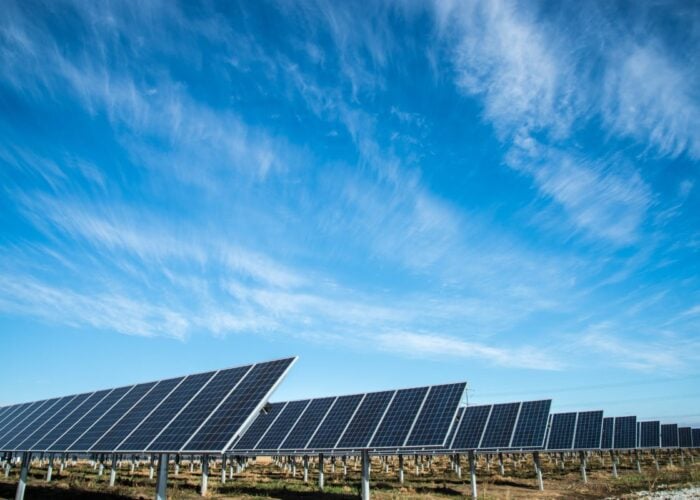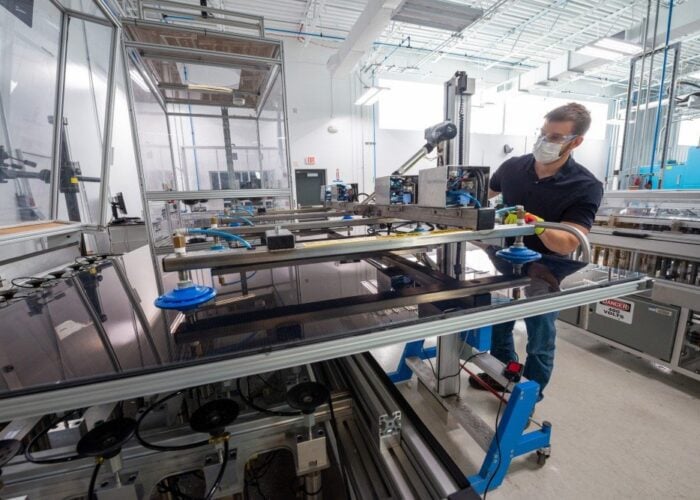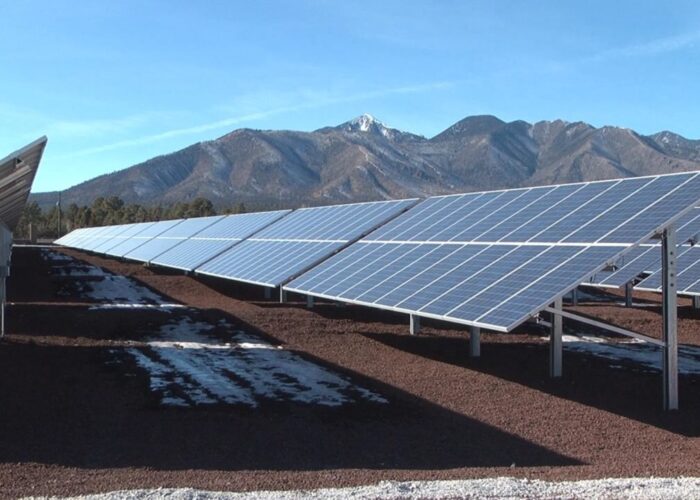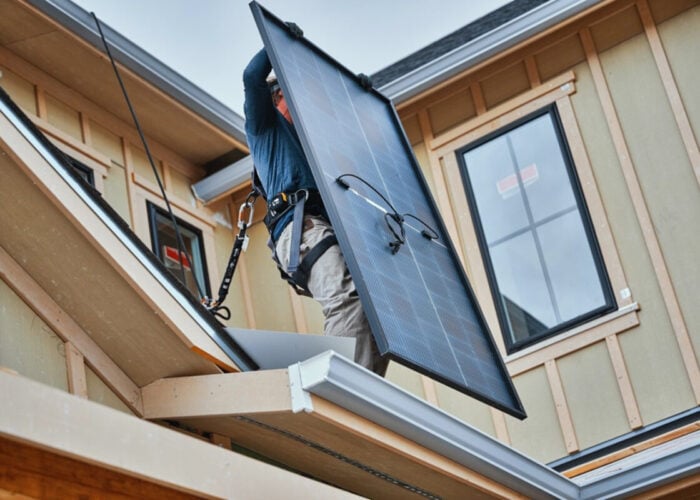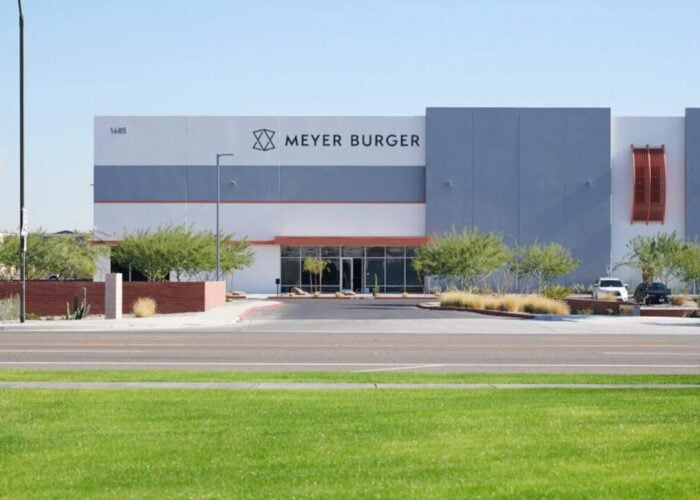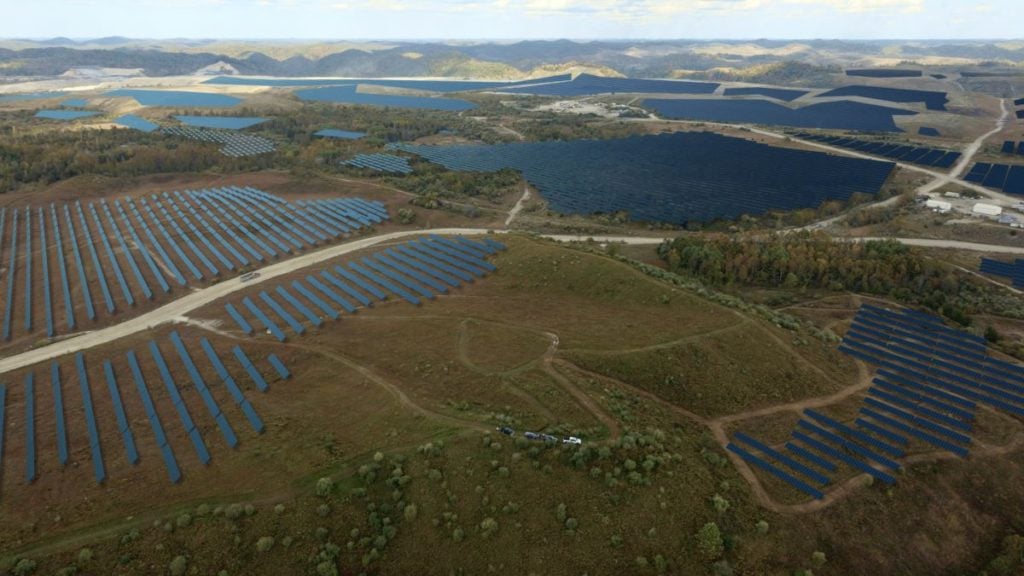
PV Tech Power Reporter Jonathan Touriño Jacobo looks at how the Inflation Reduction Act could help in redeveloping closed-down US coal assets to host solar PV projects.
Unlock unlimited access for 12 whole months of distinctive global analysis
Photovoltaics International is now included.
- Regular insight and analysis of the industry’s biggest developments
- In-depth interviews with the industry’s leading figures
- Unlimited digital access to the PV Tech Power journal catalogue
- Unlimited digital access to the Photovoltaics International journal catalogue
- Access to more than 1,000 technical papers
- Discounts on Solar Media’s portfolio of events, in-person and virtual
Sometimes an image can say more than a 1,000 words, and in the electricity transition this image is probably the development of renewable projects in a former coal mine or plant. As more and more sites are being closed in order to decrease the carbon emissions generated by fossil fuel-powered plants, these sites also present a good opportunity to be repurposed in order to achieve this much needed and accelerated transition. All while using land that would otherwise be of no use for many other purposes.
Redevelopment can also offer a solution to coal communities, especially the workers, to not be left behind in this transition and give a social connotation to these projects. In the US, the Appalachian region might be the one more prone in the coming years to these types of projects.
Ensuring that communities in states such as Virginia, Kentucky or Pennsylvania are part of the renewables transition and benefit from it, both with projects built at former fossil fuel sites and with new job opportunities, will be key for the complete decarbonisation of the US.
A country that has for many decades depended a lot on coal but has slowly closed its mines which could now be used to build solar PV or battery storage plants instead.
Using former coal mines or coal plants for renewable projects will create an opportunity to accelerate the growth of solar.
Just to give an idea of scale, in 1990 the US had 675 coal facilities in operation with a combined generation capacity of 330GW, according to data from the US Energy Information Administration. The latest data available, 2021, shows that 269 facilities remained operational, representing a nameplate capacity of 228GW.
This feature will look at the benefits of developing solar PV on such sites, the challenges of doing so and how the Inflation Reduction Act (IRA) could help more developers to carry on building projects in brownfield sites.
Adders for coal community projects
Earlier this year the US Treasury Department released guidance on the IRA bonuses for historically fossil fuel-producing energy communities, predominantly coal-fired ones.
Solar developers who end up building a solar PV plant in areas or communities that are historically focused on energy production or have hosted significant fossil fuel plants can receive up to a 10% bonus on both the Investment Tax Credit (ITC) and Production Tax Credit (PTC) facilities of the IRA.
This would allow to balance the extra cost associated with building a project on a brownfield site, says Chad Farrell, founder and co-CEO of renewables developer Encore Renewable Energy, adding: “Generally, the added cost of doing a landfill project is right around 10%. So getting that boost is really going to be helpful for bridging that gap.”
This 10% bonus will undoubtedly attract more developers to build projects on this type of land, adds Ron Kiecena, chief development officer at independent power producer (IPP) BrightNight which recently announced an 800MW solar PV plant on a former coal mine in the state of Kentucky which is explored in this feature.
The tax benefits are a game changer as they make it more attractive to investors, adds Adam Edelen, CEO of solar developer Edelen Renewables. And if having tax benefits to build a solar project will attract more companies to fund these projects, the mere social aspect of building these on former coal mines or plants would show the commitment from the biggest companies to transition towards clean energy. “For some of these projects, Fortune 500 companies are willing to pay a premium for demonstrable social and economic impact in the communities where they were developing,” says Edelen.
A boon for coal communities
Probably one of the biggest advantages of building a solar PV plant on a former coal mine or a coal plant for a solar developer is that it will help avoid going through the strenuous permitting process of securing or building transmission infrastructure. Sean Rai-Roche, policy advisor at climate change think tank E3G, says: “In the US, former or soon to be retired coal plants represent a huge opportunity to speed up solar deployment. These coal sites already have transmission infrastructure in place that can enable faster connection to the grid, avoiding the lengthy interconnection queues currently seen in the US. Previously polluting coal plants can be used to fast-track grid connection for new, clean technologies, reducing costs and regulatory issues at the same time as breathing life into communities which have historically depended on that coal.”
Aside from the transmission infrastructure, Edelen points out, these sites also have a good transportation access to the facilities that was built to facilitate the transportation of what was mined, for instance.
But probably one of the most important benefits these projects can offer to coal communities is an economical boost with the creation of jobs, giving former coal workers a chance to continue working in the energy industry.
“I’m not sure that there’s anything a lot more fitting than putting out-of-work coal miners or out-of-work oil and gas workers back to work in the green energy economy,” says Edelen, adding: “We have a moral obligation to create opportunities for these folks. They literally powered the industrial development of America for hundreds of years, and these folks shouldn’t be left behind just because the economy is transitioning.”
Edelen Renewables works closely with communities and technical college systems, workforce and economic development authorities and local elected officials in order to build the infrastructure that not only supports being able to hire workers locally but also that the workers get the necessary skills, training and credentials to work on the projects. In an industry where skilled workers are scarce – which is often the highest or second highest preoccupation for solar developers when developing a project – allowing former coal workers and oil and gas workers to be brought to the renewables shift will be a great help to accelerate the uptake of renewables capacity across the US.
“In all of our projects we recruit, hire, train and credential workers locally. So we have a heavy focus on legacy impact to the community. Where we develop our projects, they tend to generate more in tax revenue for the local community,” says Edelen.
Farrell concurs and adds the aspect of how a piece of land that is either unusable or complicated to redevelop can be used to return the property to a productive reuse. Not only that but it also brings taxes, new jobs, and in the end produces renewable energy with the construction of a solar plant.
“Part of that is specialising in reclaiming undervalued real estate for clean energy generation and storage, which ultimately helps us revitalise communities and create a cleaner and brighter future for all. We like to call it from brownfields to bright fields. And that we’re actually giving these properties a second act or an encore, as a renewable energy project,” says Farrell.
Farrell points out that after the IRA was passed and the industry celebrated the legislation, two main challenges still remained in order to allow for renewables’ growth across the US. If one of them is the grid, which in this case is less of an issue for solar projects on former coal land due to already existing transmission infrastructure, the other one is indeed a major issue: the lack of labour force. Or rather the increased need of workers in order to add all the capacity in such a short time.
To put things into perspective, the US solar industry employed more than 263,000 people at the end of 2022, according to the Interstate Renewable Energy Council (IREC), while a paper from trade association Solar Energy Industries Association (SEIA) forecasts more than half a million jobs across the industry by the end of the decade.
Among the many programmes included in the IRA, there are some directed towards jobs and more specifically apprenticeship programmes which would allow not just to bring new people in the industry but also former fossil fuel workers, from the coal, gas or oil industries too.
“Everywhere we go, we were saying: ‘where are we going to get all these workers?’ And I think people coming out of the coal industry and the fossil fuel industry are going to be a big part of the labour pool that’s going to be required to make this transition,” says Farrell.
Another benefit for coal communities is that these sites would also be able to allow the development of more storage projects – as a standalone – in brownfield sites as they are much smaller projects than solar ones, according to Farrell. “A five megawatt solar project in the Northeast is like a 25 acre land requirement. There aren’t enough brownfield sites, unfortunately, that are that large. And they’re not as many coal sites either.”
Whereas a 5MW storage facility occupies less than one acre of land and would also reduce all the difficulties associated to develop a solar project in a former coal site, no matter the size. “There’s a proliferation of that size of brownfield sites out there.”
Many brownfield sites in the US have been built close to urban locations which usually require a greater electrical demand. Installing energy storage near those densely populated areas would help improve the grid resiliency. Farrell expects the boom of solar PV projects to be built on brownfield sites to also happen with energy storage in the next five to ten years.
Developing solar PV on coal: “Difficulties are legion”
If the advantages of developing solar PV on former coal mines are all too important to take into consideration, the list of challenges on the other hand are “legion”, says Edelen.
The engineering aspect of these projects alone can be a complicated jigsaw puzzle to make sure they still remain cost effective. “Because you’ve got a mountaintop removal site in Eastern Kentucky, or an Appalachian mountain site, you may have geotechnical challenges that drive up the cost of your array,” says Edelen.

“These projects generally have an elevation of 100 feet or higher. The mountains have been reduced to bedrock. The way you anchor the modules into the ground is fundamentally different, because you can’t sink a pilon eight feet into the ground on a mountaintop removal site the same way that you can in a Kansas wheat field. There are all sorts of technical challenges that are extraordinarily difficult to circumvent. And as a result, the price of the power necessarily goes up,” adds Edelen.
Unlike most greenfield sites, where it is easier to use a similar approach from project to project, brownfield sites are all too different from each other and unique.
This extra process of engineering also needs to take into consideration the land it will be built in and avoid any further damage to it or create further health or environmental issues, which in itself would require more permitting work.
Building an 800MW utility-scale solar project on a former coal mine
IPP BrightNight unveiled in July 2023 that it was to develop an 800MW solar PV plant located at a former coal mine in the state of Kentucky. One of the largest in the US in that type of land and the company’s flagship project on coal mine land, says Ron Kiecena, chief development officer at BrightNight, which has a development portfolio of 23GW of renewables.
The Starfire project will represent a US$1 billion investment and will also include the construction of a 20-mile transmission line which would enable the addition of 1GW of renewable capacity to be built in the region. “The transmission infrastructure to be added as part of this project will help drive future economic growth in the region. Starfire will provide low-cost renewable power which will help attract new business opportunities,” says Kiecena.
Given its size and the implications of it, the company partnered with automaker Rivian and environmental nonprofit The Nature Conservancy to develop the project, and Kiecena highlighted the importance to build partnerships for such a large-scale project on a former coal mine. “Like-minded partners are a necessity when taking on a project of this magnitude. The roadmap to transforming formerly mined land is not yet written and therefore it is imperative that a network of companies, policy makers and regulatory bodies join forces to partner on this opportunity, to achieve completion of an extraordinary, literally one-of-a-kind, regional economic impact project. BrightNight is planning to apply for a grant with the Department of Energy and has assembled a full team of key partnerships for the project to support that application.”
Brownfield sites – of which coal mines are part of – often come with contaminated soil or groundwater whether from industry or commercial use and usually require additional engineering and permitting work, says Farrell. “We need to make the regulatory community comfortable that we can actively construct a solar project on this land without creating concern with respect to exposure to the contaminants to human health or the environment.”
In terms of the different uses of technologies between a brownfield site and a greenfield site, there are no real restrictions or differences between both other than the topographic constraints that will decide if a solar project can or cannot use trackers or if any type of site work is required, says Farrell. “That’s the same whether you’re on a greenfield site or a coal site. You’re always going to have topographic limitations.
Whether we’re doing ballasted or fixed, there are certain sloped thresholds that we just can’t exceed.”
Conclusion
“States across the country, irrespective of political stripe, are already transforming old coal facilities into new wind and solar projects. As more and more coal plants in the US come closer to their retirement date, there are even greater opportunities to come. The US has committed to cleaning up its electricity system by 2035 and has sent strong signals on the need to phase out coal from its power mix. If it is serious about this, it needs to consider all available options. States should be working to identify suitable coal projects for conversion. Doing so would benefit solar developers, local communities, and the battle against climate change,” says Rai-Roche.
Chad Farrell points to how these communities have borne the burden of providing energy for the greater population and because these sites are getting closed should not mean they are to left behind in the renewables transition. Thanks to programmes included in the IRA, it will be easier for developers to build solar PV plants on former coal mines or plants which are expected to be more frequent in the coming years.
| Our publisher Solar Media is hosting the 10th Solar and Storage Finance USA conference, 7-8 November 2023 at the New Yorker Hotel, New York. Topics ranging from the Inflation Reduction Act to optimising asset revenues, the financing landscape in 2023 and much more will be discussed. See the official site for more details. |


